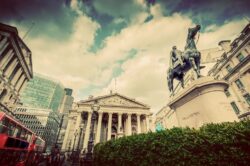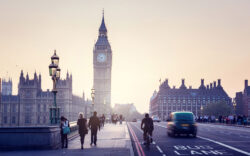My grandfather was a champion lawn-bowler for a very simple reason – his ability to conduct psychological warfare on his opponents. This began with his bowling stance.
Given his wobbly footing, he had to bowl between his legs without bending his knees – enough to put off anyone standing behind him.
But his favourite and most unnerving taunt was to accuse opponents of “skinny dipping” as loudly as possible. Which, in this case, referred to bowling too narrow and causing your bowl to cross from one side of the rink to the other, which is supposedly uncouth when it comes to bowling etiquette.
A steady stream of commentary such as this would eventually wear down the opponent over time and grandpops, by name and nature, would bring home the prize meat-tray more often than not.
The equally renowned investor, Warren Buffett, also uses the skinny-dipping analogy: “Only when the tide goes out do you discover who’s been swimming naked.”
Well, last week, the tide finally began to turn. And it exposed an ugly sight. A sea of red which I won’t remind you of.
The Financial Times pointed out that the most exciting, flashy and optimistic bubble investors are falling back down to earth, while those with long-term, sensible and undervalued investments are doing OK:
Cathie Wood’s flagship Ark fund is on the cusp of being overtaken by Warren Buffett’s Berkshire Hathaway in the post-pandemic performance table, reflecting a dramatic shift in fortunes between the two prominent investors.
Now, performing as well as Buffett is not so bad. But the underlying idea here is the key. It’s a tortoise and hare story. Growth and tech stocks boomed and busted while value stocks basically crept upwards. In the end, they ended up in the same place.
But there may be an even better way to escape our money itself…
But what is this tide that I’ve been talking about? And what’s the stock market’s version of skinny dipping?
Well, we may have given up a great deal of government central planning of our economies over the last 80 years, but one crucial point of government intervention remained. That of monetary policy, which is called “policy” for a reason.
Central banks still control the price of money – the interest rate. They dictate what should be a free market price, with savers and borrowers establishing an equilibrium for lending and borrowing money.
As a result of government price controls, we’ve had the same crises and problems you’d expect to see in, say, the electricity industry, if the government controlled the price of electricity.
Oh, wait, that’s a bad example. But you get the idea…
Central banks cause booms and busts in the financial system by fiddling with prices, much like Ofgem does with energy prices. And, as a result, firms in the two industries have a bad habit of experiencing crises and going bust, much as other government-run industries did in the past.
Unlike Ofgem, central banks can conjure up money to bail out the banks that periodically need it. That is a power which governments are also increasingly making use of with their own finances.
But, back to skinny dipping…
The tide that has turned is the interest rate. Because of inflation, central banks are finally expected to raise rates. And this means that all the companies that went on borrowing binges over the past few years of low interest rates could be caught out with a higher interest bill than they can afford.
They might become corporate zombies, meaning that they cannot afford to pay their debts, but are able to keep borrowing to keep the loans rolling over.
S&P Global pointed out that borrowing really has shot up during the recent loose monetary policy:
Rated U.S. companies issued $2.122 trillion in bonds during 2020 to make up for the pandemic-induced shortfall in revenues, according to LCD. The record annual total was up 59.7% from the 2019 figure. Companies have continued to issue bonds at historically elevated levels in 2021, reaching $1.417 trillion as of Sept. 15.
A 60% boom in borrowing to make up for lost revenue? Does that seem like a good idea?
Well, according to the stock market, it wasn’t. That’s because now rates are rising. And some of those companies are not going to be able to repay the debt before the interest bill spikes.
Of course, it’s not just companies that went on a zero-percent-interest-rate borrowing binge. But corporate borrowers are listed on the stock market, and its shareholders who are left penniless first if the bonds default. Hence the plunge in share prices, especially amongst companies without the revenue to cover debt. That is, tech stocks with vague promises of future revenue streams that are always just a few months… years away.
Still, let’s mention some of the other debtors who will also be in trouble if interest rates rise…
Fox Business: “Red-hot housing market fuels mortgage borrowing record
Lenders issued an estimated $1.61 trillion in purchase mortgages in 2021”.
Financial Times: “Private equity sidesteps IPO parade by borrowing billions”.
Wall Street Journal: “CLOs Wrap Up Record Year” with “Bundles of low-rated corporate loans have been one of 2021’s top-performing debt investments”.
Bloomberg: “Consumer Debt in U.S. Surges by a Record $40 Billion” and the “Figure was nearly double that of median estimate in survey”.
The question on investors’ minds is who goes bust first. In the 1980s it was the savings and loans (S&L) crisis. In the 1990s, it was many (but not all) Asian governments and companies. In 2000, it was tech stocks. In 2008, it was holders (and some issuers) of mortgage-backed securities. In 2012, it was some European governments.
But this way of thinking may be missing the forest for the trees.
Do you think governments will allow large companies to go bust? Or mortgage borrowers? Or anyone?
I mean, if we can fight off a pandemic with vast government deficits and printing money, can’t we fight off a financial crisis?
We can, and we will. It will be done at the expense of the value of our money. Which is why the gold price held up during the recent market crunch, despite higher interest rates being behind the drop.

Nick Hubble
Editor, Fortune & Freedom




